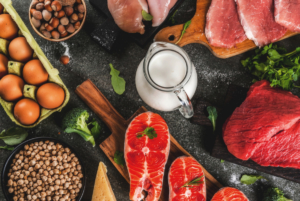How do you get Listeria?
 A person usually becomes infected with Listeria by eating contaminated food. While many different kinds of food can become contaminated with Listeria while being processed (i.e., while at a food manufacturing or distribution facility), some foods are considered higher risk, meaning that these foods are more likely to harbor Listeria monocytogenes. These foods include:
A person usually becomes infected with Listeria by eating contaminated food. While many different kinds of food can become contaminated with Listeria while being processed (i.e., while at a food manufacturing or distribution facility), some foods are considered higher risk, meaning that these foods are more likely to harbor Listeria monocytogenes. These foods include:
- Deli meats
- Hot dogs
- Pates or meat spreads
- Raw or unpasteurized milk or other diary products
- Soft cheeses made with unpasteurized milk
- Smoked seafood
- Sprouts
Though these types of foods are particularly risky, Listeria outbreaks have been caused by things like cantaloupes, ice cream, caramel apples, bagged lettuce, and celery, which would not otherwise be considered particularly risky.
Listeria is particularly dangerous because it can grow in cold temperatures—like refrigerators—and freezing does not kill the bacteria. While Listeria can be killed by cooking at a high temperature, since many of the foods that may contain the bacteria are consumed raw, the primary way to prevent Listeria outbreaks is to prevent contamination in the first place.
Put our food safety lawyers to work for you.
Call, email or text us – it’s absolutely free – and we’ll quickly be able to tell you if you have a case and explain the process of working with a lawyer and making a claim.
